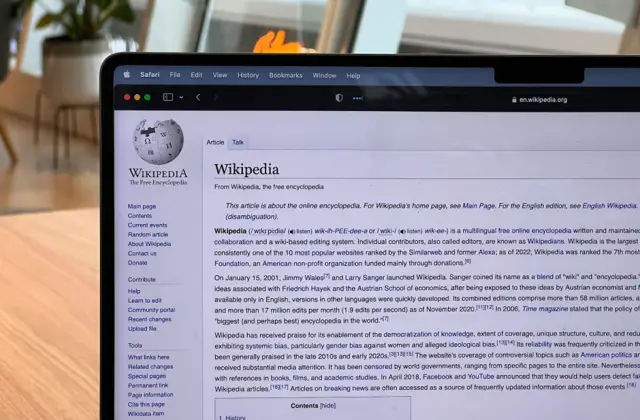In this digital age, software is a vital component of any firm that guarantees efficiency. Deciding between open-source and proprietary software is to focus on the required features for the task. Both have achieved immense success and have captured much progress in the current software market.
This article explores the key differences, benefits and platforms for using open-source and proprietary software.
Open Source Software

Open source software (OSS) is a computer software that provides access to the source code and everyone has the right to view, modify and distribute it. This software rises to stimulate innovation, group involvement, and transparency in software development. Every source code of software is registered with a license that specifies how to use, modify and share. Some examples of open-source software licenses are:
- MIT license
- GNU General Public Licence (GPL)
- BSD license
- Apache License
It is also important to note that – All Open-source falls under free software, whereas not all free software is open-source software.
Proprietary Software

Proprietary software is a secured software owned and controlled by the company or an individual. It is only accessible to individuals who have purchased a license for the software. Similarly, It provides significant support, such as training and technical assistance, which allows enterprises and organizations to rely on the supplier to assist when necessary.
However, proprietary software has a specific set of features and capabilities, so enterprises and organizations may not be able to customize it to suit their needs.
Key Differences Between Open-source software and Proprietary software
The open source vs. proprietary argument arises commonly throughout fields such as e-commerce and content management for evaluating web technologies. We will cover the major differences between open-source software and proprietary software.
| S.N | Aspects | Open-Source Software | Proprietary Software |
| 1. | User Experience | In most cases, it is not user-friendly because it is primarily concerned with the developer’s needs.
|
The software is user-friendly since it is pre-constructed and ready to use with minimal effort, even for inexperienced end users. |
| 2. | Faster Development Cycle | Since the source code is freely available, a wide range of developers contribute to its improvement and maintenance. | It involves a closed development process controlled by a single entity that limits resource and expertise availability. |
| 3. | Customization Comparison | It is highly customisable, allowing developers to make adjustments that match their requirements. | It is designed with limited features and functions and developers are not allowed to modify the source codes. |
| 4. | Cost Comparison | It is often free of licensing fees and other expenses. | It is expensive due to multiple licensing fees. |
| 5. | Security Comparison | Due to its transparent nature, hackers and cybercriminals can inspect the source code and identify vulnerabilities. | It is more secure than open-source software, it does not allow visibility and modification of the source |
| 6. | Updates and Maintenance | Developers release updates and provide access to users with the most recent features and security patches. | The software publisher controls updates through scheduled releases and maintenance agreements to maintain peak performance and security. |
| 7. | Development Entity | It operates by community innovation among users and developers. | It is organized by software vendors that have different priorities than end users. |
| 8. | Examples | Examples are Android, Linux, Firefox, Open Office, GIMP, VLC Media player, etc. | Examples are Windows, macOS, Internet Explorer, Google Earth, Microsoft Office, Adobe Flash Player, Skype, etc. |
Platforms for Open-source and Proprietary software
Here, open source is free software with a free license and proprietary software is protected by copyright and will have to purchase a license. The business organizations’ or developers’ decision to choose between this two software often depends on the specific platforms mentioned below:
1. Web Servers
Open-source software is effective for web- servers because of its cost efficiency, highly customizable, and strong community support. It also offers independence from vendors, which provides flexibility in projects. Apache, Node.js and Nginx are some popular software for web servers.
2. Operating Systems
Operating systems execute both open-source and proprietary software. This software includes factors such as budget, user-friendliness, advanced features and security considerations that maximize the efficiency of software. Linux Kernel, Microsoft Office, VMware, etc are some software commonly used in operating systems.
3. Productivity Software
Proprietary software is operative for productivity software, but some organizations may work with a combination of both software. As per CDR Writers Australia experts, Proprietary Software offers customer support, maintenance and regular updates to address technical issues. This reduces the difficulty for users to learn and enhances overall efficiency. Some applications such as Microsoft Office, Apple iWork, LibreOffice, etc are for productivity software.
4. Cloud Computing Service
Open-source as well as proprietary software is equally effective for cloud computing services. It provides flexibility, cost-effectiveness and community support. They help to create scalable and efficient software with strong vendor support. Platforms like OpenStack, Docker, AWS (Amazon Web Services), Microsoft Azure, etc are used in cloud service to execute the software systematically.
5. Development Frameworks
Development frameworks often execute a combination of open-source and proprietary software. The software selection decision depends on project requirements, developer preferences, compatibility with existing systems, licensing terms, and long-term support. React.js, Angular, Microsoft.NET Framework, iOS SDK (Software Development Kit), etc are some software used for development frameworks.
Here, a summary has been provided from the aforementioned list of platforms, it can be assumed that the majority of platforms execute both open-source and proprietary software.
| Platforms | Open-Source Software | Proprietary Software |
| Web servers | Yes | – |
| Operating system | Yes | Yes |
| Productivity software | – | Yes |
| Cloud computing service | Yes | Yes |
| Development frameworks | Yes | Yes |
Open Source and Proprietary Software Business Models
Open-source and Proprietary software runs in different business models. Here, open-source software makes use of multiple revenue streams and community collaboration to sustain. Whereas proprietary software relies on close code and license sales for its revenue. Some of the business models are:
1. Open Source Business models
- Managing codebases with open-core: the source code is monetized with the help of additional proprietary features yet lets the developers use and modify the core product without charges.
- Professional service: this service includes technical support, for-pay training and consulting the developers which enhances the ability to use open-source products.
- Donations and Sponsorships: Here, the software model is developed and maintained with the help of donations and business sponsorships. Many organizations, like Mozilla and Wikimedia, depend upon donations from charitable sources to continue their projects.
2. Proprietary Software Business Model
- Inbound: This model is a long-term strategy to grow business cost-effectively and sustainably. It reaches out to users interested in your products or services through various promotions and SEO (search engine optimization) of content on websites.
- Outbound: This model helps businesses to reach out to a larger number of customers interested in their products and services. It leads to quick sales of the services or buying activity of the business.
Conclusion
In comparison, there isn’t much of a distinction between open-source and proprietary software. Both consist of benefits and drawbacks, and the choice depends on the particular needs of platforms. Each contains unique features such as cost, flexibility, enhanced security, vendor support, and many more.
However, by considering your particular requirements and objectives, you can make a wise choice that is suitable for your organization’s needs and goals.
Planning Tank is an online platform to the diverse needs of the global planning community. With a mission to create, collect, organize, and promote vital information, we serve as a centralized platform for students, academics, practitioners, and urban enthusiasts. Our initiatives harness the power of technology and educational resources to foster networking, raise awareness, and advocate for Happy, Healthy & Sustainable Human Settlements worldwide.
FAQs/ People Also Ask
1. Why Use an Open Source E-commerce Solution?
Open Source E-commerce solutions provide scalability and cost-effectiveness, allowing businesses to customize the requirements as per demands.
2. Why is it Important That WordPress is Open Source?
WordPress being open source helps the community of developers to modify the source codes, which enhances software development.
3. Is Open-source Software Always Free to Use?
Open-source software is often free to use, but some projects may offer premium features. Before operating any software, users should review the licensing terms of each project for clarity.
4. Does the Apple Operating System Use Proprietary Software?
Yes, Apple operating systems use proprietary software because they have restrictions on access to source code.
5. Can I Use Open-source Software With Proprietary Software?
Yes, you can use open-source software with proprietary software, however, you should be familiar with the licensing terms.
6. Why Do People Like to Use Proprietary Software?
Proprietary software offers features like vendor support, stability and reliability assurance and industry-specific functionality.
Author Bio
Aadya Sharma is a highly skilled content writer for CDR Writer Australia, bringing a wealth of professional experience to her craft. Specializing in technical and professional writing, Aadya excels in delivering precise and compelling content, ensuring clients receive top-notch CDRs that stand out in their respective fields.
Also Read: